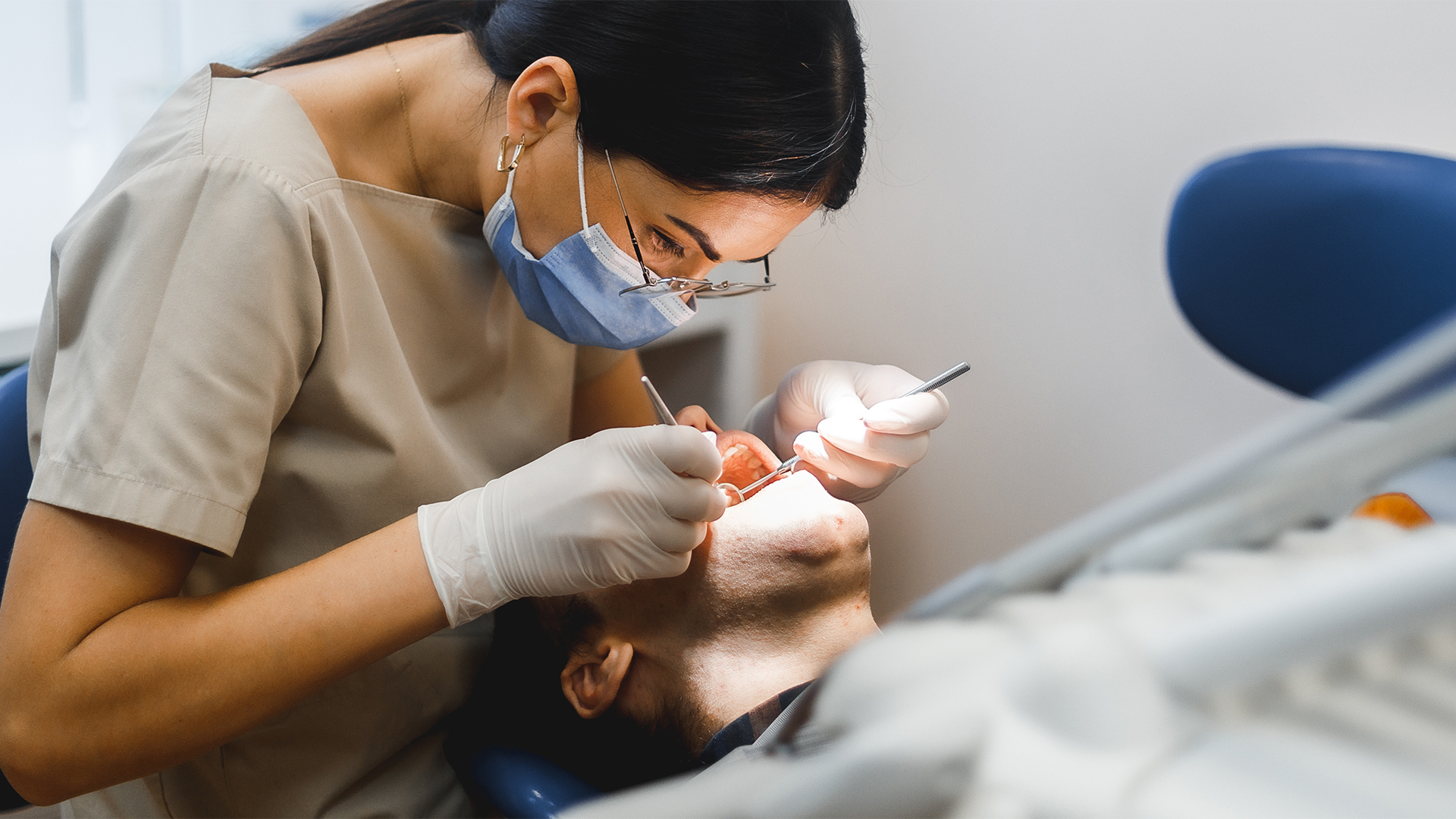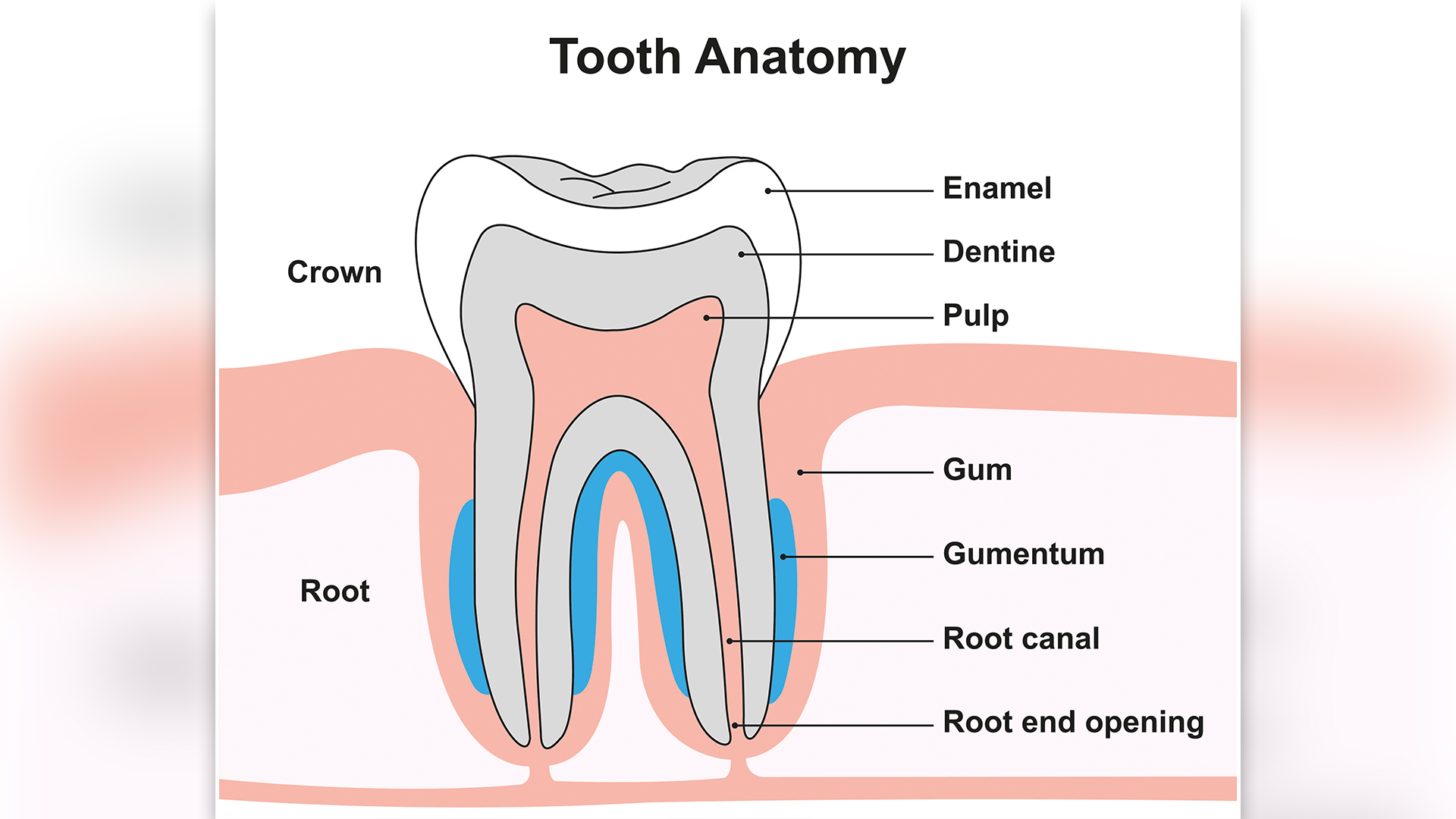How does plaque cause cavities?
A buildup of dental plaque breaks down tooth enamel, leading to tooth decay, gum disease and other oral health conditions.

Dentists say to "brush twice a day" to prevent sticky plaque from building up on your teeth and raising the risk of cavities. But how does plaque cause cavities, exactly?
The link between plaque and tooth decay largely stems from how the bacteria in plaque interact with the foods we eat. However, factors such as a person's age and whether they smoke or take certain medications can also play a role in plaque-driven tooth decay.
For background, plaque is a colorless film of bacteria that sticks to the surface of teeth and also catches bits of food in the mouth. To start forming a film, plaque microbes first embed themselves among proteins found in the saliva on a tooth's surface.
Cavities, or areas of tooth decay, tend to happen when foods rich in sugars and starchy carbohydrates — such as candy, honey, bread or cereals — come into contact with plaque bacteria, Dr. Purnima Kumar, a professor at the University of Michigan School of Dentistry and a spokesperson for the American Dental Association (ADA), told Live Science by email. When these microbes feed off the sugar from those foods, they produce acids that break down tooth enamel, the protective outer covering of the tooth, she said.
Related: How often should you floss?
Ever wonder why some people build muscle more easily than others or why freckles come out in the sun? Send us your questions about how the human body works to community@livescience.com with the subject line "Health Desk Q," and you may see your question answered on the website!
"Since plaque is sticky, the acids produced by the bacteria in plaque can stay in contact with your teeth for a long time and, over time, break down enamel, creating the perfect environment for a cavity to form," Kumar said. "Cavities usually develop over an extended period of time and take months to years to form."
This is due to the enamel's hardy structure. Made primarily of a sturdy mineral called calcium phosphate, the tooth's outermost layer is the hardest tissue in the human body, according to a 2017 review published in the journal Physiology Reviews. This allows enamel to shield the underlying dental pulp from damage caused by temperature changes, physical trauma or harmful chemicals.
Get the world’s most fascinating discoveries delivered straight to your inbox.
Acids produced by plaque bacteria are too weak to deplete enamel of all its minerals at once — however, if they stay in contact with teeth for long enough, the acids will eventually break through the enamel to the sensitive tissues beneath.
Kumar said that some individuals, particularly those with a condition called dry mouth, are more susceptible than others to tooth decay from plaque and tartar, which is hardened dental plaque that can't be removed with normal brushing and flossing. Saliva not only helps people chew and swallow food but also protects teeth and gums by reducing the growth of harmful bacteria and maintaining a neutral pH in the mouth, according to the ADA. It does this by helping flush microbes and dietary carbs from the mouth and by supplying compounds that slow microbial growth or stop bacteria from sticking to teeth.
Dry mouth can be caused by multiple factors, including cigarette smoking, radiation therapy applied to the head or neck, and certain medications, such as tricyclic antidepressants, decongestants and diuretics, Kumar said.
Children and older adults are also at higher risk of cavities than other age groups. "Poor oral hygiene habits, frequent consumption of sugary diet and frequent snacking are just a few ways children can be more susceptible, but having a family history of cavities can also contribute to this [risk]," Kumar said.
Tooth decay in older adults, on the other hand, is linked to dental fillings. "Because many older adults lacked fluoride and modern dental care when growing up, they often have many dental fillings, and these fillings are weakened over the years and tend to fracture," Kumar said. Bacteria accumulate in these tiny cracks and cause acid buildup, leading to decay, she added.
"You might also be at increased risk if you snack between meals, eat sugary foods and drinks at frequent intervals, and have cracked or chipped teeth," she said.
This article is for informational purposes only and is not meant to offer medical advice.

Anna Gora is a health writer at Live Science, having previously worked across Coach, Fit&Well, T3, TechRadar and Tom's Guide. She is a certified personal trainer, nutritionist and health coach with nearly 10 years of professional experience. Anna holds a Bachelor's degree in Nutrition from the Warsaw University of Life Sciences, a Master’s degree in Nutrition, Physical Activity & Public Health from the University of Bristol, as well as various health coaching certificates. She is passionate about empowering people to live a healthy lifestyle and promoting the benefits of a plant-based diet.



